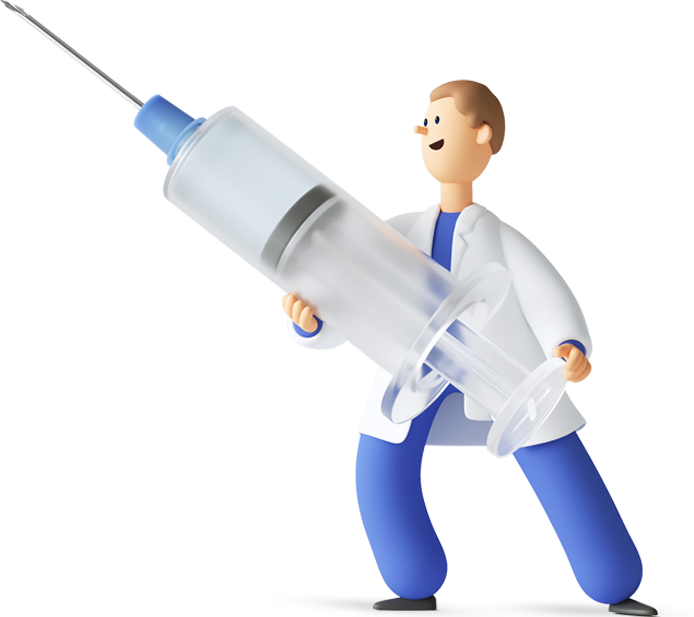What is an Aneurysm?
An aneurysm is a localized, abnormal bulge in the wall of a blood vessel, typically an artery, resulting from a weakened vessel wall. This condition can occur in various parts of the body, including the brain, aorta, and peripheral arteries. While some aneurysms remain asymptomatic and are discovered incidentally, others may present with symptoms or lead to life-threatening complications if they rupture.

Types of Aneurysms
- Cerebral (Brain) Aneurysm: Occurs in the blood vessels of the brain. A rupture can lead to a hemorrhagic stroke, causing bleeding in the brain.
- Aortic Aneurysm: Develops in the aorta, the major artery carrying blood from the heart to the rest of the body. It can be classified into:
- Abdominal Aortic Aneurysm (AAA): Occurs in the part of the aorta passing through the abdomen.
- Thoracic Aortic Aneurysm: Occurs in the part of the aorta passing through the chest cavity.
- Peripheral Aneurysm: Occurs in arteries other than the aorta, such as those in the legs or neck.

Causes and Risk Factors
- The exact cause of aneurysms is not always clear, but several factors may contribute to their development:
- Hypertension (High Blood Pressure): Increases the force against artery walls, potentially leading to weakness.
- Atherosclerosis: The buildup of fatty deposits in the arteries can weaken the vessel walls.
- Genetic Factors: Certain inherited conditions, such as Marfan syndrome and Ehlers-Danlos syndrome, affect connective tissues and can predispose individuals to aneurysms.
- Trauma: Injury to blood vessels can result in aneurysm formation.
- Infection: Certain infections can cause arterial wall inflammation, leading to aneurysms.
- Lifestyle Factors: Smoking, poor diet, and lack of exercise can increase the risk.

Symptoms:
Symptoms vary depending on the aneurysm’s location and whether it has ruptured:
- Unruptured Cerebral Aneurysm:
Headaches, Vision problems, Eye pain, Facial numbness - Ruptured Cerebral Aneurysm:
Sudden, severe headache, Nausea and vomiting, Stiff neck, Loss of consciousness, Seizures - Abdominal Aortic Aneurysm:
Deep, constant pain in the abdomen or side Back pain, A pulsating sensation near the navel - Thoracic Aortic Aneurysm:
Chest or back pain, Shortness of breath, Cough, Hoarseness
Diagnosis
Detecting an aneurysm often involves imaging studies:
- Computed Tomography (CT) Scan: Provides detailed cross-sectional images of the body.
- Magnetic Resonance Imaging (MRI): Uses magnetic fields to produce detailed images, especially useful for brain aneurysms.
- Ultrasound: Commonly used for abdominal aortic aneurysms to visualize the aorta.
- Angiography: Involves injecting a contrast dye into the bloodstream to visualize blood vessels on X-rays.
Treatment Options
Treatment depends on the aneurysm’s size, location, and risk of rupture:
- Monitoring: Small, asymptomatic aneurysms may be regularly monitored with imaging studies.
- Medications: To manage risk factors like hypertension, reducing stress on the artery walls.
- Surgical Intervention:
- Open Surgery: Involves removing the damaged section of the artery and replacing it with a synthetic graft.
Endovascular Repair: A less invasive procedure where a stent graft is inserted through the arteries to reinforce the vessel wall.
Prevention and Management - While not all aneurysms can be prevented, certain measures can reduce the risk:
- Control Blood Pressure: Maintain healthy blood pressure levels through diet, exercise, and medications if necessary.
- Healthy Lifestyle: Adopt a balanced diet, engage in regular physical activity, and avoid smoking.
Regular Check-ups: Especially important for individuals with a family history of aneurysms or related conditions.
Dr. Aditya Gupta leverages cutting-edge microsurgical and endovascular techniques to manage aneurysms safely and effectively, offering patients tailored care and improved outcomes
Can I trust my tap water?
Lorem ipsum dolor sit amet, consectetur adipiscing elit. Ut elit tellus, luctus nec ullamcorper mattis, pulvinar dapibus leo.
Is my microwave giving me cancer?
Lorem ipsum dolor sit amet, consectetur adipiscing elit. Ut elit tellus, luctus nec ullamcorper mattis, pulvinar dapibus leo.
How long am I contagious when I have the flu or a cold?
Lorem ipsum dolor sit amet, consectetur adipiscing elit. Ut elit tellus, luctus nec ullamcorper mattis, pulvinar dapibus leo.




